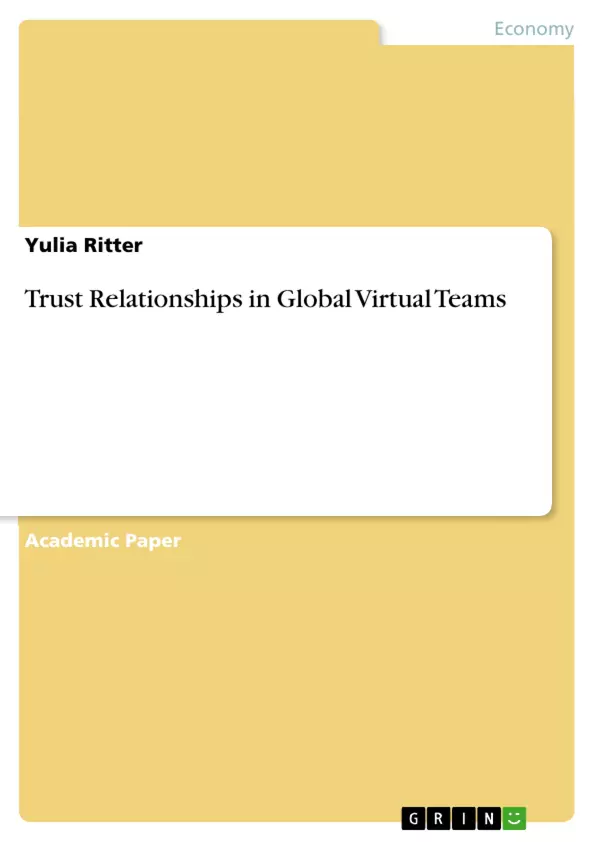Increasing global expansion in the environment of knowledge-based competition and globally dispersed business landscape, along with technological progress and a fundamental transformation of modern organizations from hierarchical, bureaucratic structures to more organic organizational designs created a conducive environment for the development of global virtual teams (GVTs). Recent academic research revealed that building trust relationships in a virtual context has a positive influence on the team’s performance and effectiveness.
Hence, based on the thorough analysis of 117 academic papers, this study conducts a systematic investigation and critical discussion of the academic literature on the topic of genesis, evolution, and maintenance of trust relationships in GVTs. To examine this intriguing topic and to satisfy the research gaps, this paper has two main objectives: firstly, to emphasize the importance of building trust relationships in GVTs and to analyze what factors influence the development and maintenance of interpersonal trust and communication quality in virtual context; and secondly, to summarize the achieved theoretical and practical implications and provide suggestions for the further research.
Inhaltsverzeichnis (Table of Contents)
- Introduction
- Literature review
- Global Virtual Teams and Trust
- Key conceptualizations of trust
- Role of trust in global virtual teams
- Genesis of Trust in Global Virtual Teams
- Sources and antecedents of trust
- Phenomenon of swift trust
- Evolution of Trust in Global Virtual Teams
- Calculus-based trust
- Knowledge-based trust
- Identification-based trust
- Barriers affecting trust formation
- Maintenance of Trust in Global Virtual Teams
- Implications of the findings and research directions
- Global Virtual Teams and Trust
- Theoretical implications
- Managerial implications
- Limitations and further research directions
- Conclusion
Zielsetzung und Themenschwerpunkte (Objectives and Key Themes)
This study aims to examine the genesis, evolution, and maintenance of trust relationships in global virtual teams (GVTs) through a systematic review of 117 academic papers. It emphasizes the importance of building trust in GVTs and analyzes factors influencing the development and maintenance of interpersonal trust and communication quality in virtual contexts.
- Genesis of trust in GVTs
- Evolution of trust in GVTs
- Maintenance of trust in GVTs
- Impact of trust on GVT performance
- Implications for research and practice
Zusammenfassung der Kapitel (Chapter Summaries)
- Introduction: This chapter introduces the concept of GVTs and highlights their increasing importance in the globalized business landscape. It also discusses the challenges associated with building trust in virtual teams.
- Literature review: This chapter provides a comprehensive review of the existing literature on trust in GVTs. It explores various conceptualizations of trust, the role of trust in virtual teamwork, and factors influencing trust formation and maintenance.
- Theoretical implications: This chapter discusses the theoretical implications of the findings from the literature review, focusing on how trust dynamics in GVTs contribute to our understanding of organizational behavior and team effectiveness.
- Managerial implications: This chapter examines the practical implications of the research findings for managers and organizations, offering guidance on building and maintaining trust in GVTs.
- Limitations and further research directions: This chapter identifies the limitations of the study and suggests directions for future research on trust in GVTs.
Schlüsselwörter (Keywords)
The study focuses on the key concepts of trust, global virtual teams, communication quality, and virtual teamwork. It also explores relevant themes such as cultural diversity, geographical distance, and technological advancements. The research aims to provide insights into the factors influencing trust formation and maintenance in GVTs and their implications for organizational performance.
- Quote paper
- Yulia Ritter (Author), 2018, Trust Relationships in Global Virtual Teams, Munich, GRIN Verlag, https://www.grin.com/document/1280742



